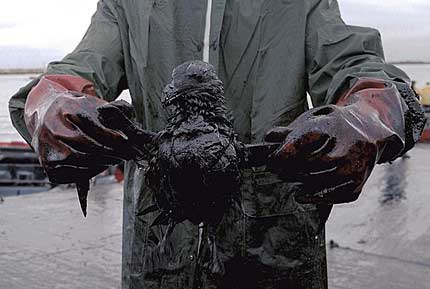
Since April 20, people around the world have watched as millions of gallons of oil spill into the Gulf of Mexico. We tune in to news account of oil-covered pelicans, tar balls washing up on beaches, and underwater “plumes” that may be even more damaging that the oil washing up on our shorelines. An entire ecosystem, not to mention people’s livelihoods, is in peril.
The sadness and disgust run deep. Political columnist David Brooks, speaking on the June 11 PBS "Newshour," said,
“We’re Americans, and deep in our cultural DNA is a sense of wilderness, of nature, that is a part of us. And whether it’s Alaska, or out west, or the Gulf, when that’s polluted, it goes deep into the spiritual sense of who we are as a country.”
We may find a silver lining to this catastrophe by finding high-quality learning resources that explore the science of an oil spill and get learners to engage in thinking about solutions. And because our response to the spill is so visceral--you can almost feel the oil on your skin when you hear reports of it spreading ever further—the most effective teaching tools may also be visceral.

For me, that means hands-on activities. Here’s an example: with little more than cooking oil and cheesecloth, you can create your own mini-spill in your classroom or kitchen, then have learners experiment with ways to collect and dispose of spilled oil without causing further harm to the environment.
Howtosmile.org has other hands-on activities related to oil spills as well.
For more background science, check out Kim Lightle’s recent Expert Voices post on the spill, which lists resources including those that provide images of the spill, a chemistry perspective, and an online tool for showing how big the spill is compared to your town.
